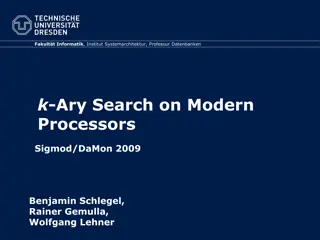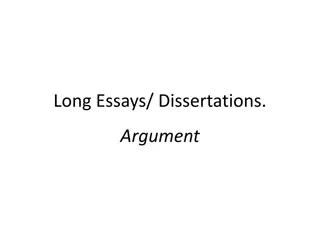Mastering Evidence Evaluation in sInvestigator Spring 2017
Dive into the world of evidence evaluation using the sInvestigator tool in the Modern Scientific Revolutions class. Explore topics like Evolution and Plate Tectonics, learn to assess relevance, credibility, author competence, and more through practical exercises. Enhance your understanding of scientific concepts through hands-on evaluation of evidence.
Download Presentation

Please find below an Image/Link to download the presentation.
The content on the website is provided AS IS for your information and personal use only. It may not be sold, licensed, or shared on other websites without obtaining consent from the author.If you encounter any issues during the download, it is possible that the publisher has removed the file from their server.
You are allowed to download the files provided on this website for personal or commercial use, subject to the condition that they are used lawfully. All files are the property of their respective owners.
The content on the website is provided AS IS for your information and personal use only. It may not be sold, licensed, or shared on other websites without obtaining consent from the author.
E N D
Presentation Transcript
Using sInvestigator Spring 2017 - Modern Scientific Revolutions Class 2 Evaluating Relevance and Credibility of Evidence (Round Earth) Class 3 Evaluating Selected Evidence (Evolution) Class 10 Argument Construction, Evidence Search, and Evidence Evaluation (Plate Tectonics)
EVOLUTION Class 3 Lesson Design What do we know? Direct Instruction How do we know? Items of Evidence Evidence Evaluation
EVOLUTION sInvestigator Learning Goals Select from 15 items of evidence Attach items to one or more of four hypotheses Fossil records indicate that life has changed over time. DNA sequencing indicates that life has changed over time. Artificial selection is possible. There are examples of natural selection. Evaluate item relevance and credibility
Open sInvestigator Click on the green + in the corner Select 06 Evolution Click on Scen to display initial lesson argumentation View evidence by clicking on menu
Using sInvestigator Items of evidence in database were provided to students
Evaluating Evidence As you drag an item of evidence, two squares are displayed, a green one (for favoring evidence), and a red one (for disfavoring evidence). Drop the text on the corresponding square. The evidence is now associated with the hypothesis. Double click on NS to assess the relevance of the evidence to the hypothesis.
Evaluating Evidence Assess credibility. Click on item of evidence. Click on Argument. Click on [evidence]. Drag and drop [evidence] onto green box under item of evidence. Drag and drop
Evaluating Evidence Double click on NS to assess the author competence, author objectivity, and publication reputation. sInvestigator will generate a credibility rating.
YOUR TURN Evaluate 3 items of evidence: Drag and drop evidence to associate with relevant hypothesis. Double click on NS to assess the relevance of the evidence to the hypothesis. Assess credibility. Click on item of evidence. Click on Argument. Click on [evidence]. Drag and drop [evidence] onto green box under item of evidence. Evaluate author competence, author objectivity, and publication reputation. sInvestigator will generate a credibility rating. Relevance Credibility
PLATE TECTONICS Class 10 Lesson Design What do we know? Direct Instruction How do we know? Evidence Search Evidence Evaluation
PLATE TECTONICS Learning Goals Search website for potential items of evidence to support scientific inquiry How was the Earth formed? What drives changes in the Earth s surface? What are the different types of plate boundaries? Evaluate item relevance and credibility
In sInvestigator Click on the green + in the corner Select 08 Plate Tectonics with Full Argument Click on Scen to display argumentation Open sInvestigator Example Plate Tectonics Evidence file from your flash drive.
Simulating Internet Search Open sInvestigator Example Plate Tectonics Evidence file from your flash drive. Highlight block of text in Description cell
Question 1 How was the Earth formed? As you drag the text, two squares are displayed, a green one (for favoring evidence), and a red one (for disfavoring evidence). Drop the text on the corresponding square. The evidence is now associated with the hypothesis. By studying the remnant magnetizations in ancient meteorites, an MIT team has determined that the solar nebula the vast of disc of gas and dust that ultimately gave rise to the solar system lasted around 3 to 4 million years.
Question 1 How was the Earth formed? Lifetime of solar nebula http://news.mit.edu/2017/scientists-estimate- solar-nebulas-lifetime-0209 Add a title and a URL to the evidence item. Save edited evidence item. Evaluate relevance and credibility.
YOUR TURN Evaluate 3 items of evidence Complete justification form for 1 item Drag and drop evidence text to associate with relevant hypothesis. Double click on NS to assess the relevance of the evidence to the hypothesis. Assess credibility. Click on item of evidence. Click on Argument. Click on [evidence]. Drag and drop [evidence] onto green box under item of evidence. Evaluate author competence, author objectivity, and publication reputation. sInvestigator will generate a credibility rating. Relevance Credibility























